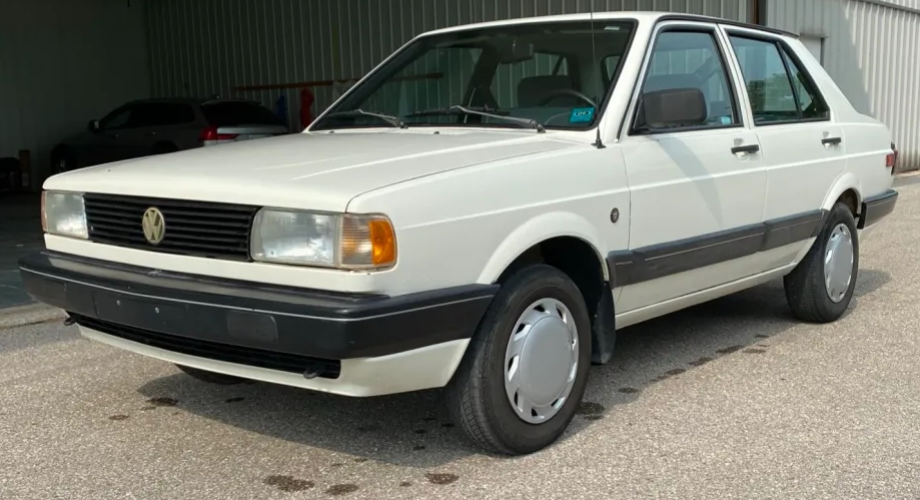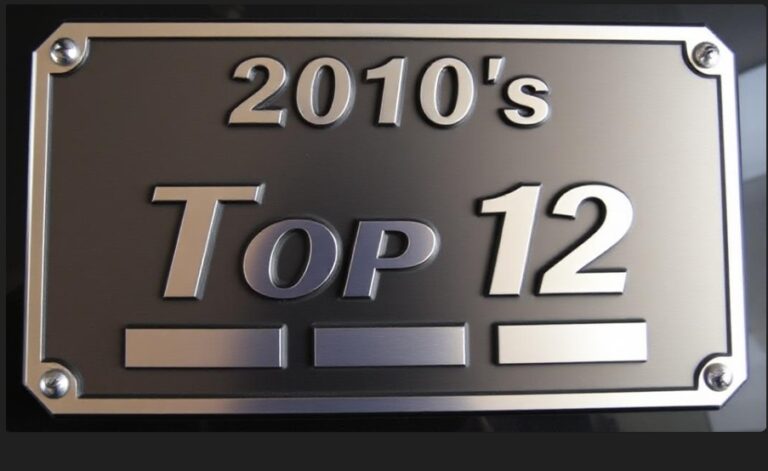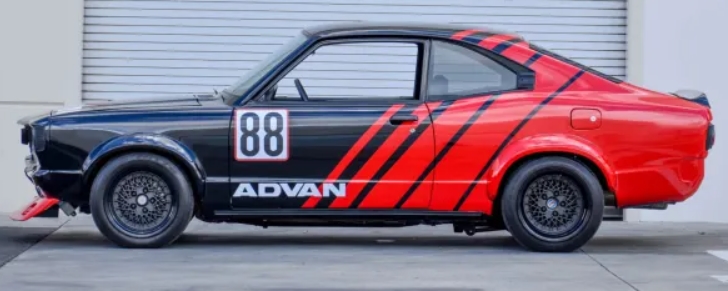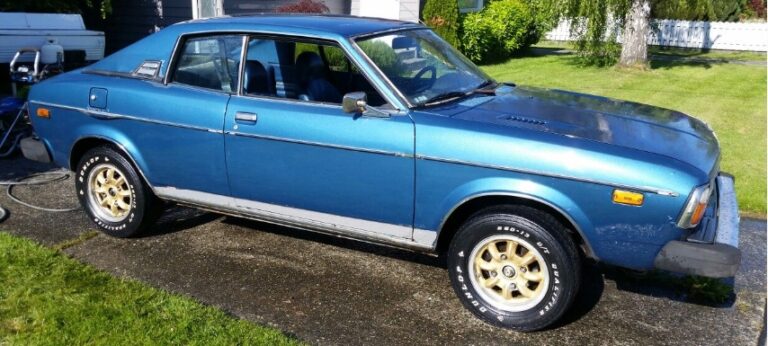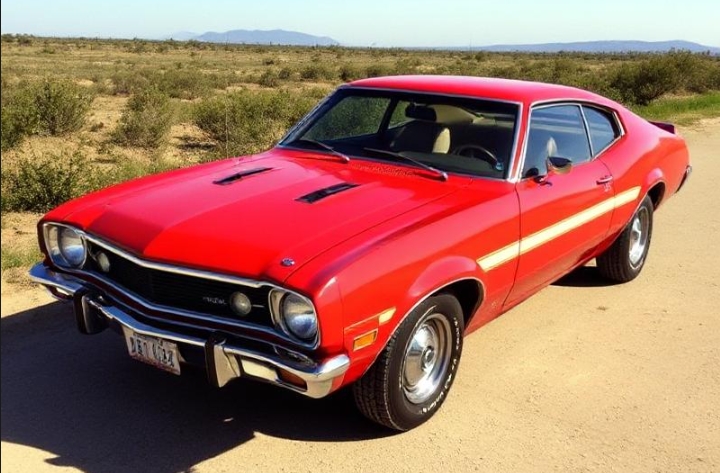The Clever Canine: Charting the Nomadic Evolution of the Volkswagen Fox
In the vast and storied history of Volkswagen, certain nameplates evoke immediate and powerful recognition: Beetle, Golf, Passat. These are monolithic pillars of the automotive world. Then there are the others, the names that are more fluid, more adaptable, and perhaps more interesting for their varied history. Among these, the “Fox” stands out. It wasn’t a single car but rather a concept, a badge applied to three distinctly different vehicles across three decades, each tailored to provide a clever, practical, and affordable solution for its specific time and market. From a hardy South American transplant in North America to a rebadged classic in South Africa, and finally to a purpose-built city car for a new millennium, the story of the Volkswagen Fox is a fascinating journey through the company’s global strategy.
Part I: The Brazilian Import (North America, 1987-1993)
In the mid-1980s, Volkswagen of America faced a gap in its lineup. The popular Rabbit (Golf Mk1) had been replaced by the larger, more expensive Golf Mk2, and the entry-level market was being fiercely contested by Japanese competitors. VW needed a simple, affordable car to slot beneath the Golf and Jetta. The answer came not from Wolfsburg, but from São Bernardo do Campo, Brazil.
Volkswagen do Brasil had been producing a successful family of vehicles based on its own Bx platform. This family included the Gol (a hatchback), the Voyage (a two-door sedan), the Parati (a two-door wagon), and the Saveiro (a pickup). For the North American market, Volkswagen decided to import the Voyage and the Parati, unifying them under a single, memorable name: the Fox.
Production Years: 1987 – 1993
Launched for the 1987 model year, the Fox was marketed on its robust simplicity and German engineering heritage, despite its Brazilian origins. It was powered by a single engine option for its entire run: a longitudinally mounted 1.8-litre inline four-cylinder engine. This fuel-injected powerplant produced a modest 81 horsepower but was known for its durability and torque, making the lightweight Fox feel surprisingly peppy.
The model lineup was straightforward and evolved slightly over its seven-year lifespan:
Fox (1987-1993): The base model was available exclusively as a two-door sedan. It was a spartan affair, featuring vinyl seats, manual windows, and very few standard amenities, embodying the true spirit of an economy car. It was initially offered with a four-speed manual transmission, with a five-speed becoming standard in later years.
Fox GL (1987-1993): This was the more popular and better-equipped trim level. It was available as a four-door sedan and a stylish two-door station wagon (often simply called the Fox Wagon). The GL trim added features that were considered comforts at the time, such as cloth upholstery, a trip odometer, tinted glass, and upgraded interior trim. An optional three-speed automatic transmission was also available on the GL.
Fox GLS (1988): For a single model year, Volkswagen offered a top-tier GLS trim. It was a limited-run model that included premium features like alloy wheels and a sunroof, attempting to add a touch of luxury to the budget-friendly platform.
Wolfsburg Edition (1989-1991): As was tradition for Volkswagen, a “Wolfsburg Edition” package was offered. This was primarily an appearance and comfort package available on the GL, typically bundling popular options like air conditioning, a premium cassette stereo, and unique interior fabrics or exterior badging.
The North American Fox received a minor facelift in 1991, which saw the sealed-beam headlamps replaced with more modern composite units and a revised grille and bumpers. Despite its humble origins and no-frills nature, the Fox earned a reputation for being a tough, reliable, and economical vehicle. However, by 1993, with evolving safety standards and market tastes, Volkswagen discontinued the model, leaving the entry-level slot open until the arrival of the Mk3 Golf.
Part II: The African Interlude (South Africa, 1982-1997)
Concurrently, but entirely separate from the North American story, the Fox nameplate was also in use in South Africa. Here, it had a completely different identity. The South African Volkswagen Fox was, in fact, a rebadged and locally produced Volkswagen Jetta Mk1.
After the Jetta Mk2 was introduced globally, Volkswagen of South Africa continued to produce the original, first-generation Jetta as a budget-friendly option, much like they did with the Mk1 Golf, which famously lived on as the Citi Golf. To differentiate this enduring classic from the newer models, it was given the name “Fox” in 1982. This version of the Fox was celebrated for its dependability and spaciousness, serving as a durable family sedan for the region. It remained in production for an impressive 15 years, a testament to the timelessness of the original Giugiaro design.
Part III: The Modern City Slicker (Europe & Latin America, 2003-2021)
After a decade of dormancy, Volkswagen resurrected the Fox name in 2003 for an all-new vehicle. This time, it was a purpose-built city car designed primarily in Brazil but engineered for global markets, including Europe. Codenamed “Project Tupi,” this new Fox was built on the PQ24 platform, the same architecture underpinning the successful Volkswagen Polo Mk4.
This third iteration of the Fox was a radical departure from its predecessors. It adopted a “tall car” design philosophy, focusing on maximizing interior space and practicality within a compact footprint. Its high roofline and clever packaging, including an innovative sliding and folding rear bench seat, gave it a sense of spaciousness that belied its small size. This Fox was the true successor to the Volkswagen Lupo in Europe and a modern, aspirational entry-level model for Latin America.
Production Years: 2003 – 2021 (Latin America), 2005 – 2011 (Europe)
The model range for this Fox was far more complex and varied, reflecting its long production run and presence in diverse markets.
European Models (2005-2011):
In Europe, the Fox was positioned as a simple, value-oriented city car. It was sold exclusively as a three-door hatchback. The engine lineup was focused on efficiency:
1.2L three-cylinder petrol engine (55 PS)
1.4L four-cylinder petrol engine (75 PS)
1.4L TDI three-cylinder diesel engine (70 PS)
Trim levels were kept simple to emphasize its budget-friendly appeal. In the UK, for example, the lineup was:
Fox (or S): The base model, offering little more than the essentials.
Style (later Urban Fox): This trim added desirable features like body-colored bumpers and mirrors, electric windows, remote central locking, and slightly more upscale interior trim.
While praised for its interior space and solid build quality, the Fox struggled in the hyper-competitive European city car market and was eventually replaced by the more sophisticated and desirable Volkswagen Up! in 2011.
Latin American Models (2003-2021):
In its home market of Brazil and across Latin America, the Fox was a resounding success and enjoyed a much longer and more illustrious career. It was offered as both a three-door and a five-door hatchback and spawned an entire family of vehicles. The engine lineup primarily consisted of 1.0L and 1.6L “Total Flex” engines, capable of running on gasoline, ethanol, or any mixture of the two.
The trim and model evolution was extensive:
Initial Trims (2003-2009): The lineup included models like City, Plus, and Sportline, which offered varying levels of equipment from basic to sporty.
The CrossFox (2005-2018): Perhaps the most iconic variant, the CrossFox was a rugged, crossover-inspired version. It featured a raised suspension, all-terrain tires, plastic body cladding, roof rails, and a distinctive externally mounted spare tire on a swing-away arm. The CrossFox captured the spirit of adventure and became immensely popular, defining a new segment in the market.
The SpaceFox / Suran (2006-2019): To cater to families, Volkswagen developed a mini MPV/station wagon version. It was known as the SpaceFox in Brazil and the Suran in Argentina and other markets (and briefly as the SportVan in Mexico). It offered significantly more cargo space and rear-seat room, making it a practical family hauler.
Facelifts and Updates:
The Latin American Fox received two major facelifts.
2010 Facelift: The front end was completely redesigned to align with Volkswagen’s new global design language, featuring sharp, horizontal lines similar to the Golf Mk6. The interior was also heavily revised with a new dashboard and higher-quality materials. Trim levels were updated to Trendline, Comfortline, and the top-spec Highline.
2015 Facelift: A second update brought further cosmetic refinements, a redesigned interior with options for a touchscreen infotainment system, and crucially, the introduction of the new, more powerful 1.6L 16-valve MSI engine paired with a six-speed manual gearbox for the Highline and CrossFox models. Specialty models like the sporty Pepper and the rugged Track were also introduced.
By the time production finally ceased in 2021, the third-generation Fox had been on the market for 18 years, a testament to its successful design and enduring appeal in Latin America.
.

.
The Legacy of the Fox
The Volkswagen Fox may not have the singular, iconic identity of a Beetle, but its legacy is one of clever adaptation. Each car to bear the name was a product of its environment, an unpretentious tool designed to meet a specific need. The first Fox was a rugged, simple survivor that gave North Americans an affordable entry into the VW family. The second was a beloved classic given a new lease on life in South Africa. The third was a masterpiece of packaging, a versatile and immensely successful city car that spawned a whole family of popular models. Across continents and decades, the name “Fox” consistently represented Volkswagen’s commitment to delivering practical, intelligent, and accessible transportation for the masses. It was never the brand’s most glamorous nameplate, but it was always one of its most resourceful.
